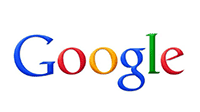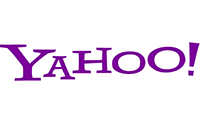Discover how we could help you realise increased sales and more customers
The Internet has brought many unique benefits to marketing, one of which being lower costs for the distribution of information and media to a global audience. The interactive nature of online marketing, both in terms of providing instant response and eliciting responses, is a unique quality of the medium.
Online marketing ties together creative and technical aspects of the Internet, including design, development, advertising and sales. It does not simply entail building or promoting a website, nor does it just mean placing a banner ad on another website. Effective online marketing requires a comprehensive strategy that synergises a given company's business model and sales goals with its website function and appearance, focusing on its target market through proper choice of advertising type, media and design.
Online marketing also refers to the placement of media along different stages of the customer engagement cycle through search engine marketing (SEM), search engine optimisation (SEO), banner ads on specific websites and email marketing.
Internet marketing is relatively inexpensive when compared to the ratio of cost against the reach of the target audience; companies can reach a wide audience for a small fraction of traditional advertising budgets. The nature of the medium allows consumers to research and purchase products and services at their own convenience, therefore businesses have the advantage of appealing to consumers in a medium that can bring results quickly.
Another advantage is that statistics can be measured easily and inexpensively. Nearly all aspects of an online marketing campaign can be measured and tracked immediately as online marketing initiatives usually require users to click on an advertisement, visit a website and perform a targeted action. Such measurement cannot be achieved through billboard advertising, where an individual will at best be interested, then decide to obtain more information at a later time.
 Search engine optimisation (SEO) is the process of improving the volume and quality of traffic to a web site from search engines via "natural" ("organic" or "algorithmic") search results for targeted keywords. Usually, the earlier a site is presented in the search results or the higher it "ranks", the more searchers will visit that site. SEO can also target different kinds of search, including image search, local search, and industry-specific vertical search engines.
Search engine optimisation (SEO) is the process of improving the volume and quality of traffic to a web site from search engines via "natural" ("organic" or "algorithmic") search results for targeted keywords. Usually, the earlier a site is presented in the search results or the higher it "ranks", the more searchers will visit that site. SEO can also target different kinds of search, including image search, local search, and industry-specific vertical search engines.
As a marketing strategy for increasing a site's relevance, SEO considers how search algorithms work and what people search for. SEO efforts may involve a site's coding, presentation and structure, as well as fixing problems that could prevent search engine indexing programs from fully spidering a site. Other more noticeable efforts may include adding unique content to a site, ensuring that content is easily indexed by search engine robots, and making the site more appealing to users.
SEO techniques are classified by some into two broad categories: techniques that search engines recommend as part of good design and those techniques that search engines do not approve of and attempt to minimize the effect of, referred to as spamdexing. Some industry commentators classify these methods, and the practitioners who employ them, as either "white hat" SEO, or "black hat" SEO. White hats tend to produce results that last a long time, whereas black hats anticipate that their sites may eventually be banned either temporarily or permanently once the search engines discover what they are doing.
 An SEO technique is considered white hat if it conforms to the search engines' guidelines and involves no deception. As the search engine guidelines are not written as a series of rules or commandments, this is an important distinction to note. White hat SEO is not just about following guidelines, but is about ensuring that the content a search engine indexes and subsequently ranks is the same content a user will see.
An SEO technique is considered white hat if it conforms to the search engines' guidelines and involves no deception. As the search engine guidelines are not written as a series of rules or commandments, this is an important distinction to note. White hat SEO is not just about following guidelines, but is about ensuring that the content a search engine indexes and subsequently ranks is the same content a user will see.
White hat advice is generally summed up as creating content for users, not for search engines, and then making that content easily accessible to the spiders, rather than attempting to trick the algorithm from its intended purpose. White hat SEO is in many ways similar to web development that promotes accessibility, although the two are not identical.
Black hat SEO attempts to improve rankings in ways that are disapproved of by the search engines, or involve deception. One black hat technique uses text that is hidden, either as text colored similar to the background, in an invisible div or positioned off screen. Another method gives a different page depending on whether the page is being requested by a human visitor or a search engine, a technique known as "cloaking".
Search engines may penalise sites they discover using black hat methods, either by reducing their rankings or eliminating their listings from their databases altogether. Such penalties can be applied either automatically by the search engines' algorithms, or by a manual site review.
One infamous example was the February 2006 removal by Google of both BMW Germany and Ricoh Germany for use of deceptive practices. However, both companies quickly apologised, fixed the offending pages and were restored to Google's list.
 The leading search engines - Google, Yahoo! and Bing - use crawlers to find pages for their algorithmic search results. Pages that are linked from other search engine indexed pages do not need to be submitted because they are found automatically. Some search engines, notably Yahoo!, operate a paid submission service that guarantee crawling for either a set fee or cost per click. Such programmes usually guarantee inclusion in the database, but do not guarantee specific ranking within the search results. Yahoo's paid inclusion programme has drawn criticism from advertisers and competitors. Two major directories - the Yahoo Directory and the Open Directory Project - both require manual submission and human editorial review. Google offers "Google Webmaster Tools", for which an XML Sitemap feed can be created and submitted for free to ensure that all pages are found, especially pages that aren't discoverable by automatically following links.
The leading search engines - Google, Yahoo! and Bing - use crawlers to find pages for their algorithmic search results. Pages that are linked from other search engine indexed pages do not need to be submitted because they are found automatically. Some search engines, notably Yahoo!, operate a paid submission service that guarantee crawling for either a set fee or cost per click. Such programmes usually guarantee inclusion in the database, but do not guarantee specific ranking within the search results. Yahoo's paid inclusion programme has drawn criticism from advertisers and competitors. Two major directories - the Yahoo Directory and the Open Directory Project - both require manual submission and human editorial review. Google offers "Google Webmaster Tools", for which an XML Sitemap feed can be created and submitted for free to ensure that all pages are found, especially pages that aren't discoverable by automatically following links.
Search engine crawlers may look at a number of different factors when crawling a site. Not every page is indexed by the search engines. Distance of pages from the root directory of a site may also be a factor in whether or not pages get crawled.
At Stunshot, we only ever employ white hat SEO techniques. Any new web development we undertake is always built with search engine ranking in mind. We can also take an existing site and perform a full analysis, producing a report for our clients to show exactly what needs to be improved in order to achieve higher rankings.
Get in touch with us today to discuss how we can help improve your website's visibility on all the major search engines.
Pay-per-click (PPC) is an Internet advertising model used on search engines, advertising networks and content websites, such as blogs. Advertisers only pay when a user actually clicks on an advertisement to visit the advertisers' website. With search engines, advertisers typically bid on keyword phrases relevant to their target market. When a user types a keyword query matching an advertiser's keyword list, or views a webpage with relevant content, the advertisements may be displayed. Such advertisements are called sponsored links or sponsored ads, and appear adjacent to or above the "natural" or organic results on search engine results pages, or anywhere a webmaster or blogger chooses on a content page. Content websites commonly charge a fixed price for a click rather than use a bidding mechanism.
Minimum prices per click, often referred to as costs per click (CPC), vary depending on the search engine and the level of competition for a particular phrase or keyword list - with some CPCs as low as a penny. Very popular search terms can cost much more on popular search engines. The PPC advertising model is open to abuse through click fraud, although Google and other search engines have implemented automated systems to guard against abusive clicks by competitors or corrupt webmasters.
 Google AdWords is a quick and simple way to advertise on Google and its ad partners, regardless of your budget. AdWords ads are displayed along with search results on Google, as well as on search and content sites in the growing Google Network, which includes websites like AOL, EarthLink, HowStuffWorks & Blogger. With searches on Google and page views on the Google Network each day, your Google AdWords ads reach a vast audience.
Google AdWords is a quick and simple way to advertise on Google and its ad partners, regardless of your budget. AdWords ads are displayed along with search results on Google, as well as on search and content sites in the growing Google Network, which includes websites like AOL, EarthLink, HowStuffWorks & Blogger. With searches on Google and page views on the Google Network each day, your Google AdWords ads reach a vast audience.
When you create an AdWords ad to run on Google and its search partners, you can choose keywords for which your ad will appear and specify the maximum amount you're willing to pay for each click. You pay only when someone clicks on your ad.
When you create an AdWords ad to run on the Content Network, you can choose the exact content placements where you'd like your ad to appear, or you can let contextual targeting match your keywords to content. You can pay for each click (CPC) or for each thousand times someone sees your ad, which is called CPM bidding.
To save money, the AdWords Discounter automatically reduces the actual cost-per-click (or CPC) you pay to the lowest cost needed to maintain your ad's position. The AdWords Discounter keeps working no matter which method of display or bidding you choose.
There's no minimum monthly charge with AdWords, just a nominal activation fee. You can choose from a variety of ad formats, including text, image and video ads. You can also easily track your ad performance using the reports in the online account control centre.
Copyright © 2002-2025 Stunshot · All rights reserved
Terms and Conditions · Privacy Policy · Service Level Agreement · Sitemap